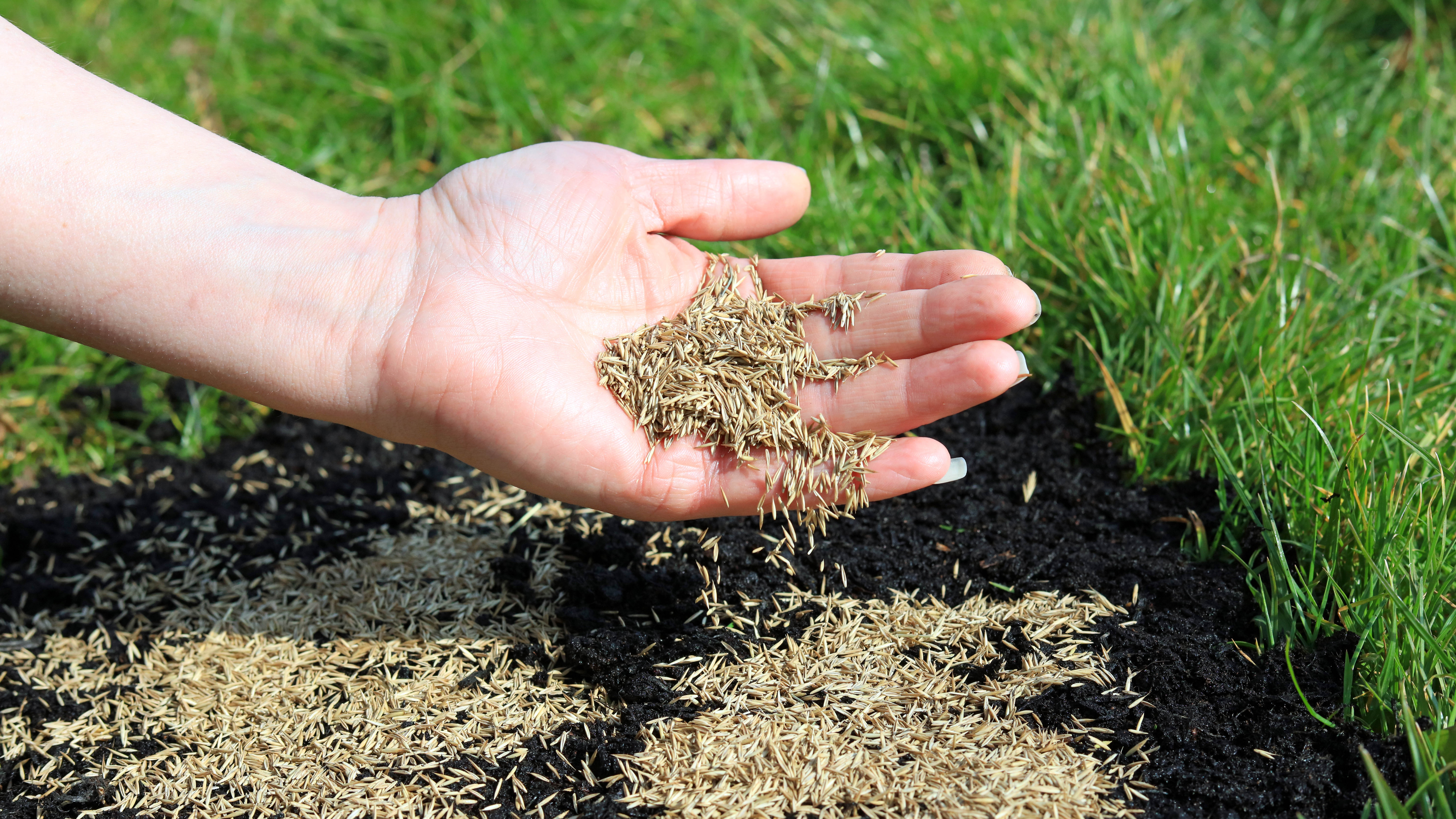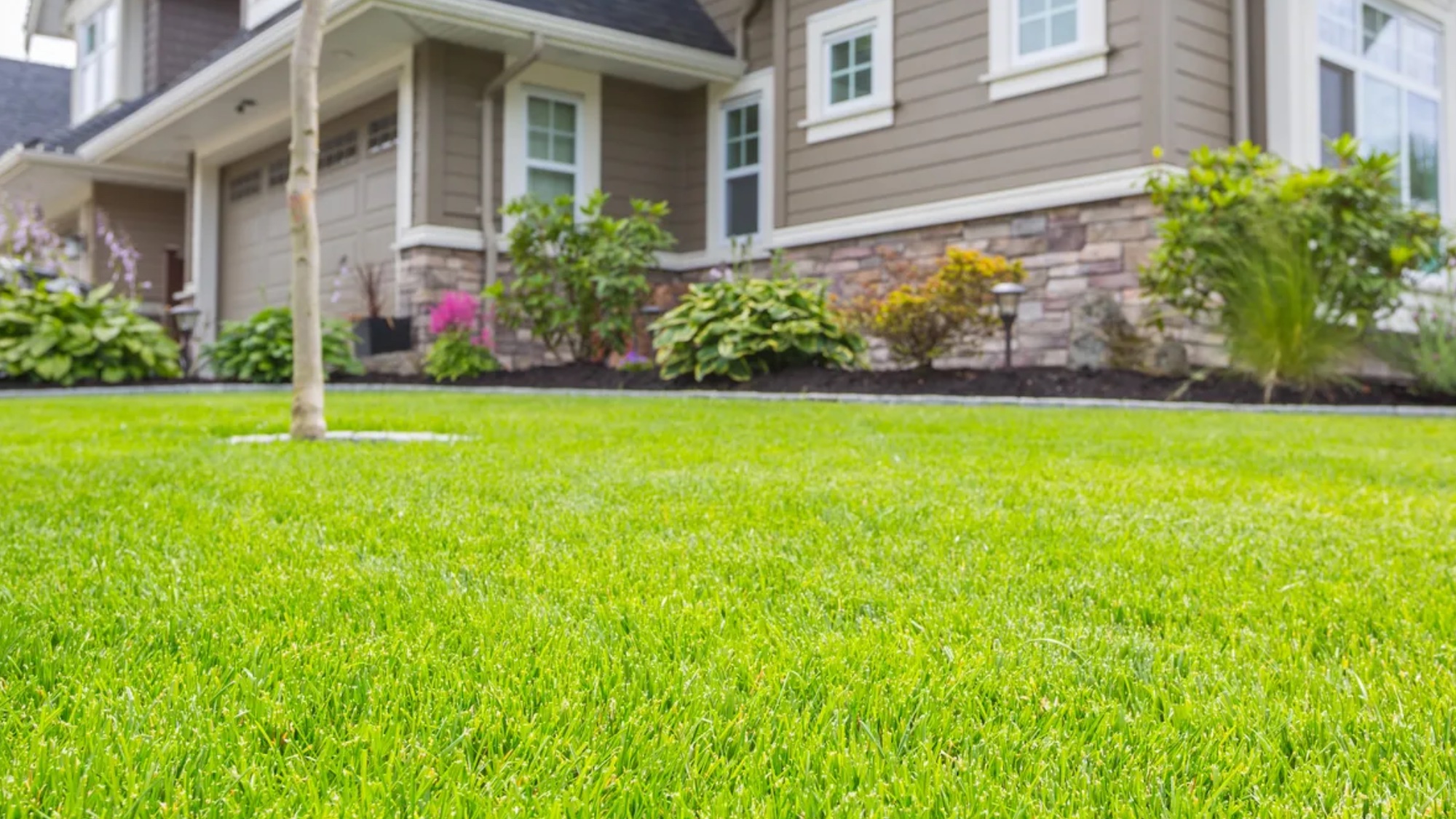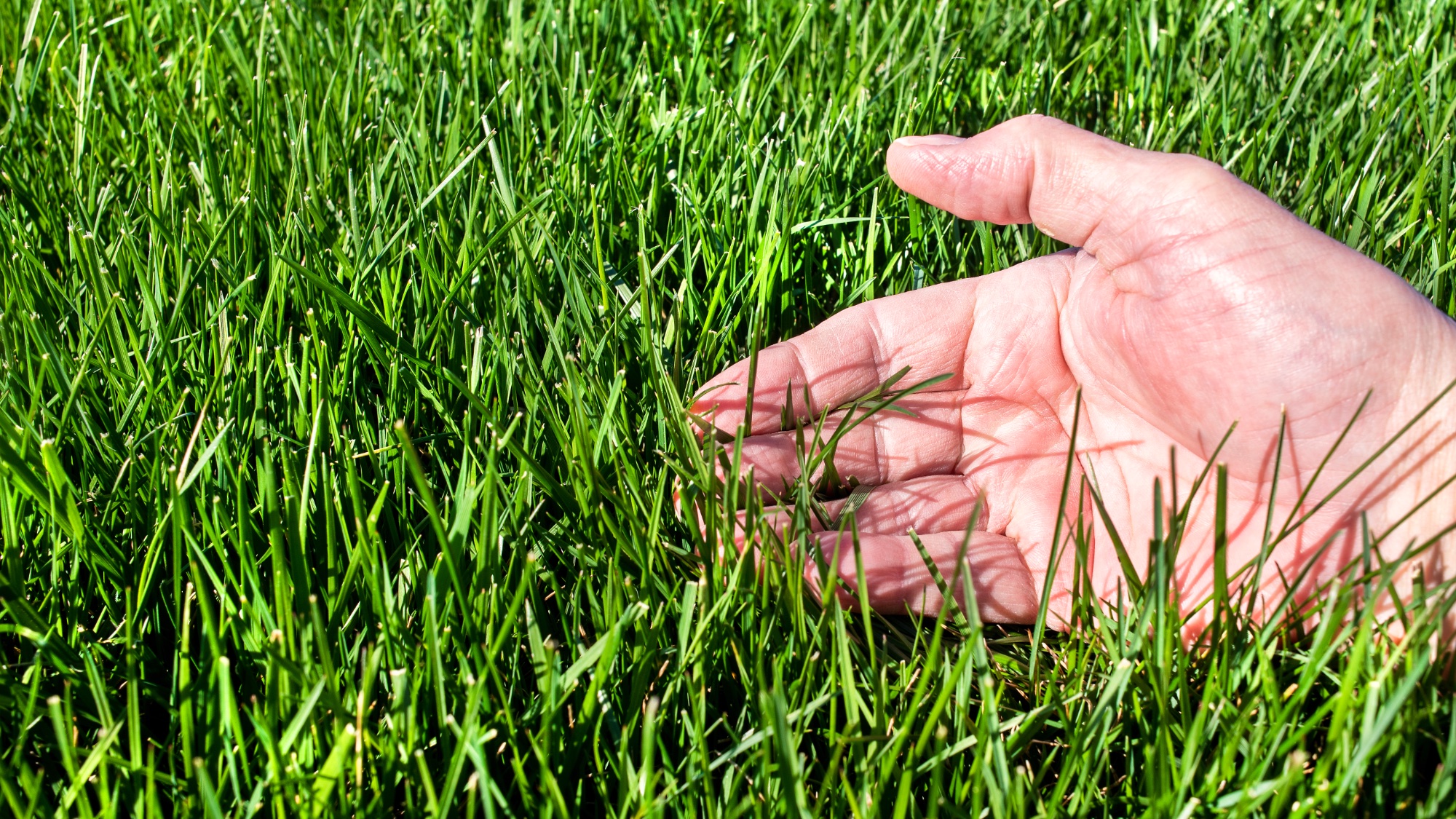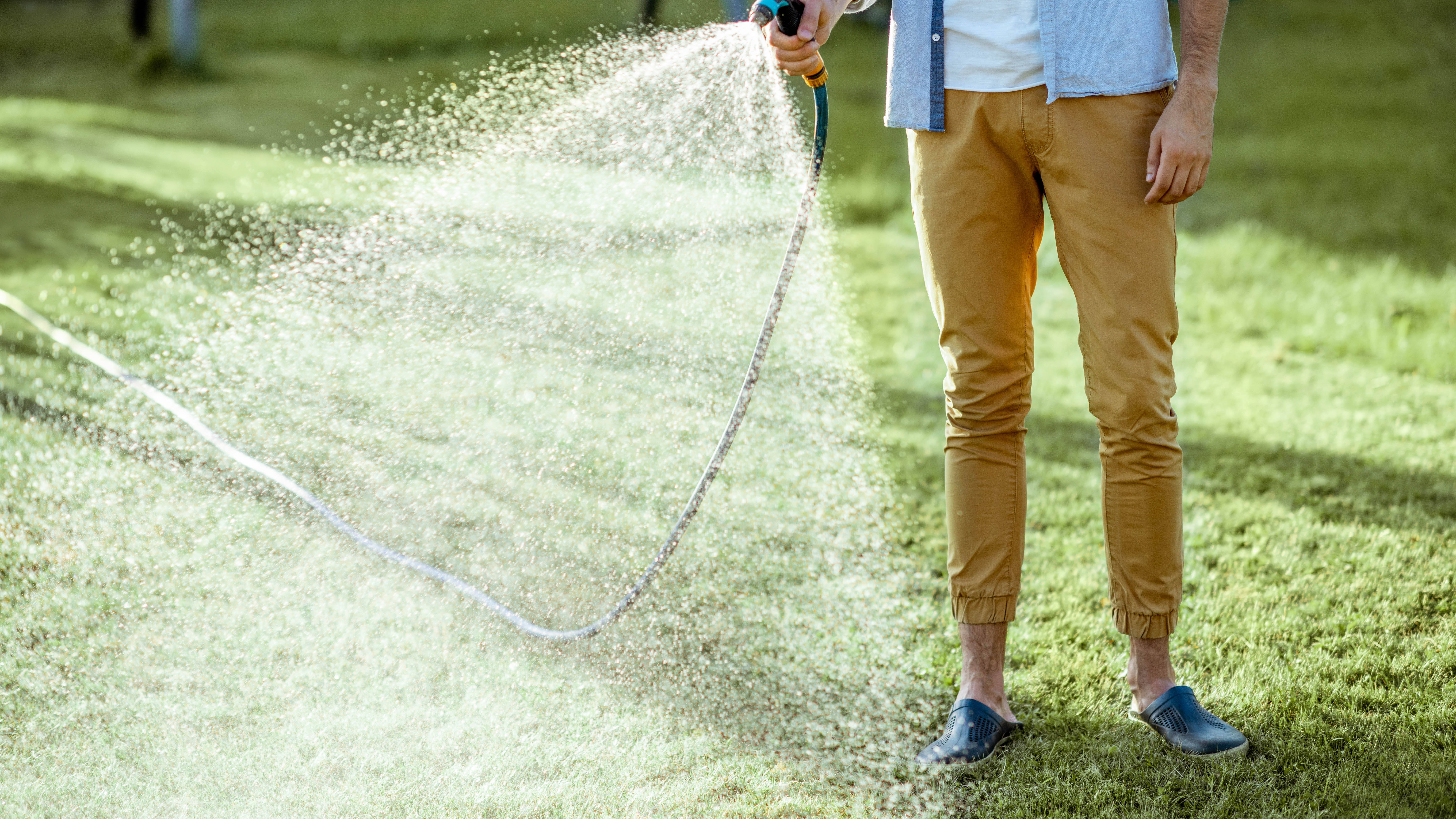How long does grass seed take to grow? We asked an expert

If your lawn has seen better days, or you have bare patches in your yard, knowing how to plant grass seed can make all the difference to healthier and greener grass.
But after you’ve sown your seeds, you might be wondering how long grass seed takes to grow, and when you'll begin to see the makings of a lush lawn. This is especially the case if you want to get your backyard-ready for those outdoor gatherings and impress your guests.
Although germination will depend on various factors such as climate conditions, soil quality, and type of grass species, there is an average time when you’ll start to see new grass growth. We’ve asked the gardening experts to tackle this common question, and offer top tips.
So, if you’re patiently waiting to see promising signs of a healthy lawn, here’s how long grass seed will take to grow. Plus, before you start sowing, you’ll want to avoid these common mistakes you’re making when planting grass seed.
How long do grass seeds take to grow?

“In general, most grass species will begin to germinate within seven to 30 days after planting”
The location, time of year and soil type will have a considerable impact on the rate it will take for your grass seed to grow. “In general, most grass species will begin to germinate within seven to 30 days after planting,” says Dr. Matthew Koch, Director of Biotechnology, Genetics and Seed at Scotts. “However, it typically takes several weeks to several months for grass to establish a strong root system and develop into a lush lawn. Some fast-growing grass species may establish roots more quickly, while others may take longer.
Depending on the region and climate, as well as the time of year, growth speed can vary for different types of cool-season grasses and warm-season grasses. Providing the right conditions such as adequate water, sunlight, and nutrients can help speed up the growth process.”
In addition, the growth period depends on the species of grass seed, and time of year they were planted. Typically, seedlings are divided into warm-climate and cool-climate varieties, with a range of different types that will grow happily in each one. There’s also a third, transitional category for middling climates.
Get instant access to breaking news, the hottest reviews, great deals and helpful tips.
“If you're planting cool-season grasses like Kentucky bluegrass, perennial ryegrass, or tall fescue, the best time to plant is in spring or early fall,” suggests Koch. “If you're planting warm-season grasses like zoysia, centipede, or bermudagrass, early summer is the best time to plant. It’s also important to prepare your lawn by removing debris, rocks, and filling in low spots to even out the surface. Once the lawn is prepped, then proceed with seeding.”
G & F 1852-3 Women Soft Jersey Garden Gloves: $11 @ Amazon
Combining practicality with pretty, we recommend these women's gardening gloves for an affordable, but dependable accessory. They ranked as the best gloves for small hands in our best gardening gloves test. We found them to be both comfortable and soft, with good dexterity. Plus, you get three colors in a pack which is amazing value for money.
How to get the most out of your grass seed

Once you’ve sown your grass seed, there are a few things you need to do to ensure healthy growth and lawn care maintenance.
1. Inspect regularly
“One of the most important steps to maintain a healthy lawn after seeding is to regularly inspect for pests and diseases like brown patches or chewed grass blades,” suggests Koch. “Early detection is important and allows for quick treatment, which can minimize damage to your lawn.”
2. Avoid footfall
Another factor to consider is to avoid heavy lawn use of foot traffic directly after you’ve put down grass seeds. This will help to ensure stronger, healthier and lush results. “You should limit foot traffic on the area for 2-3 weeks to minimise damage to the rooting in seeds,” adds Chrissie Handley, a lawn care specialist at Online Turf.
3. Mow carefully
“After a period of a few weeks, where you’ve allowed the grass to root in and grow to around 3 inches in height, you can mow on a high blade setting to take an inch off the top. Try not to scalp the lawn, as this can damage the area & stunt the seed growth. The first mow will help encourage good blade health and regrowth of the grass.”
How often should you water grass seedlings?

It’s advisable to water the grass seed regularly at first to help its growth, keeping the bed moist but not saturated. “Water after sowing and maintain a regular watering schedule as they begin to grow,” says Handley. “In warmer springtime conditions, you should water once daily minimum. We recommend watering in the morning and at night before the sun is directly overhead to allow the soil time to soak up the moisture.”
Steve Peeler, agronomist for Simple Lawn Solutions adds, "To germinate seed, I always water three times per day with a 7- 9 minute cycle. This keeps the soil and seed moist until germination occurs; at this point, the irrigation cycles decrease in frequency and increase in time. Supplying turfgrass with 1" - 2" per week is ideal. However, different grasses require closer to 1.5" per week than 2". Irrigation needs to be adjusted with the season. When temps are lower in the spring and fall, irrigation should be cut back so overwatering does not occur."
Your yard should now have a whole new lease of life. Remember to use fertilizer once it’s well-established (1-2 months old) to keep it looking vibrant and healthy. If you want to improve the appearance of your lawn, learn how to make your lawn thicker in 7 simple steps, or how to stripe your lawn and make it look bigger.
More from Tom's Guide
- Check out how to overseed your lawn in the fall and when to do it
- Here’s how to get rid of crabgrass
- Grass seed vs sod — what’s best for your lawn?

As the Homes Content Editor, Cynthia Lawrence covers all things homes, interior decorating, and garden-related. She has a wealth of editorial experience testing the latest, ‘must-have’ home appliances, writing buying guides and the handy ‘how to’ features.
Her work has been published in various titles including, T3, Top Ten Reviews, Ideal Home, Real Homes, Livingetc. and House Beautiful, amongst many.
With a rather unhealthy obsession for all things homes and interiors, she also has an interior design blog for style inspiration and savvy storage solutions (get rid of that clutter!). When she’s not testing cool products, she’ll be searching online for more decor ideas to spruce up her family home or looking for a great bargain!

